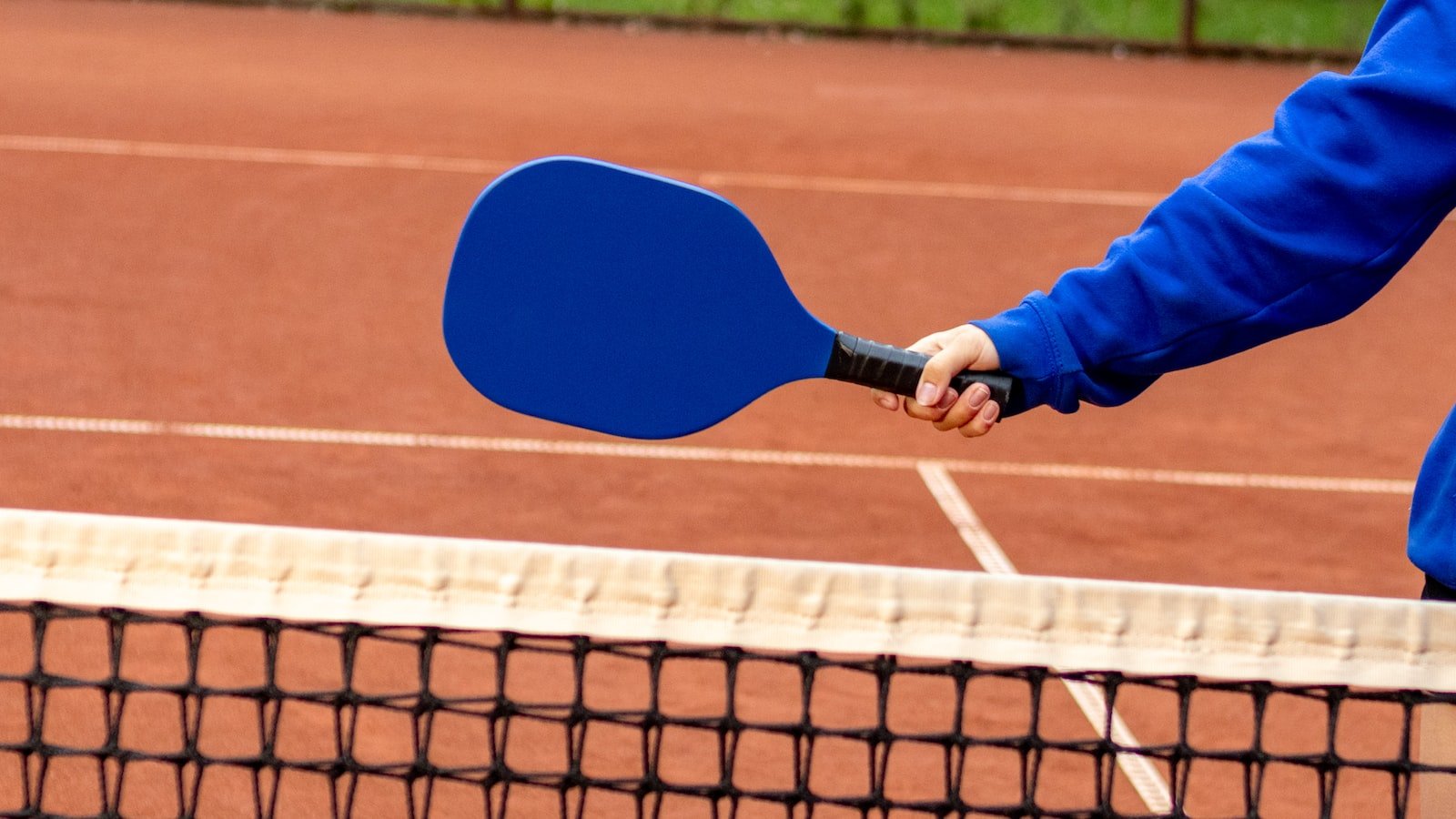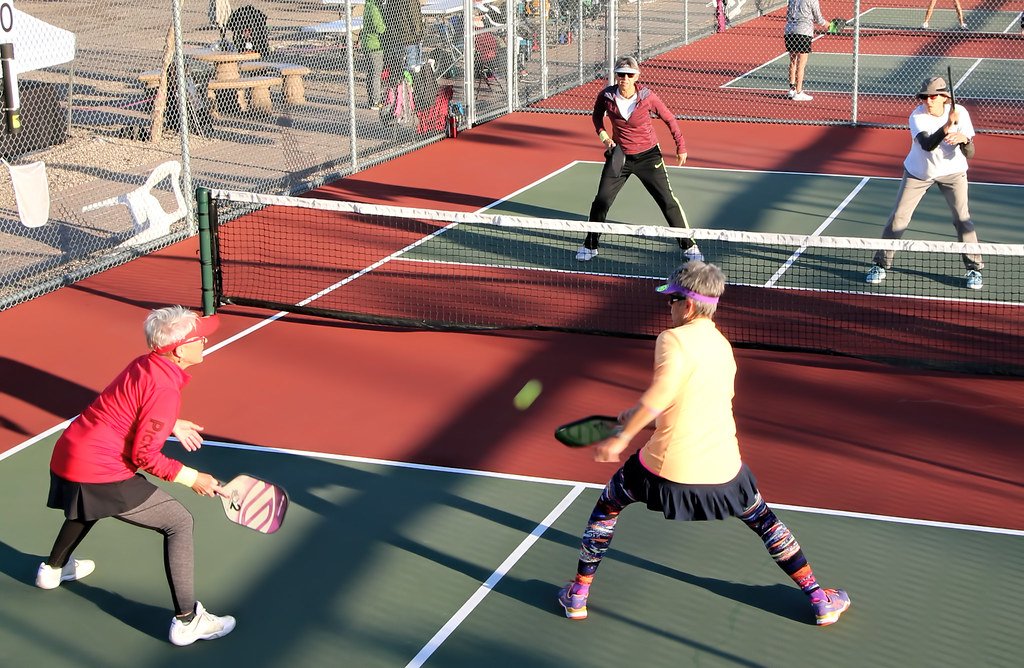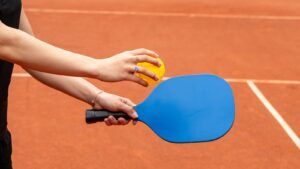Picture this: you step onto a pickleball court, paddle in hand, ready to engage in the fast-paced, addictive sport that has captivated players of all ages. As you exchange glances with your opponents, you can’t help but feel a surge of excitement mixed with a hint of anxiety. The reason? Your pickleball ranking. That mysterious numerical value that holds the power to determine your place in the fiercely competitive world of pickleball. But fear not, for in this article, we embark on a journey to unravel the enigma of pickleball rankings, deciphering those perplexing numbers and shedding light on what they truly mean. So let’s dive in and explore the fascinating universe of pickleball rankings, leaving no stone unturned. It’s time to decode the numbers and uncover the secrets they hold.
Table of Contents
- Understanding the Ranking System in Pickleball: A Closer Look at the Numbers
- Analyzing the Factors that Contribute to Player Rankings in Pickleball
- Unlocking the Secrets of Pickleball Rankings: Key Insights and Recommendations
- Breaking Down the Significance of Pickleball Rankings: What You Should Know
- Deciphering the Code of Pickleball Rankings: Strategies for Improvement
- Q&A
- To Wrap It Up

Understanding the Ranking System in Pickleball: A Closer Look at the Numbers
When it comes to the world of pickleball, understanding the ranking system is essential for players who want to gauge their skill level and track their progress. The ranking system in pickleball is a fascinating blend of science and math, designed to accurately reflect a player’s abilities. Let’s delve deeper into the numbers behind this intricate system.
Objective Measurement:
- The ranking system in pickleball relies on objective measurements to evaluate player performance. It takes into account factors such as match outcomes, opponents’ skills, and game statistics to determine a player’s overall ranking.
- By using these objective measurements, the ranking system ensures fair and consistent evaluations, minimizing the influence of personal biases or subjective opinions.
The Elo Rating System:
In pickleball, the widely adopted Elo rating system is employed to calculate rankings. Initially developed for chess, this system has been adapted for various sports and games due to its accuracy and effectiveness.
- The Elo rating assigns each player an initial score, which fluctuates based on their performance in each match. Winning against higher-ranked opponents will result in a more substantial score increase, while losing to lower-ranked opponents leads to a greater score decrease.
- Over time, the ranking adjusts to accurately reflect the player’s current skill level, constantly aligning with their performance and adapting to changes in the competition pool.
Understanding the intricate details of the ranking system in pickleball empowers players to set goals, assess their progress, and strive for improvement. The science behind the numbers provides a fair and objective measure of skill, ensuring a level playing field for all players.

Analyzing the Factors that Contribute to Player Rankings in Pickleball
Factors that Influence Player Rankings in Pickleball
When it comes to determining player rankings in pickleball, several factors come into play. These factors are crucial in assessing a player’s skill level, performance, and overall ranking in this fast-growing sport. Let’s take a closer look at the key elements that contribute to these rankings:
- Win-Loss Ratio: One of the primary factors that affect player rankings is their win-loss ratio. The number of wins and losses provides a tangible measure of a player’s performance and consistency on the court.
- Tournament Results: Another significant consideration is a player’s performance in various pickleball tournaments. Performing well in high-level competitions demonstrates a player’s ability to handle pressure and compete against skilled opponents.
- Skill Level: Of course, skill level is paramount in determining rankings. Factors such as shot technique, court awareness, agility, and dexterity all contribute to a player’s overall skill level and impact their ranking.
- Playing Style: Each individual has their own unique playing style, which also plays a role in rankings. Some players may focus on aggressive offensive strategies, while others excel in defensive play. A player’s style can influence their success and how they match up against different opponents.
- Consistency: Consistency is key in any sport and pickleball is no exception. A player’s ability to consistently perform at a high level over time can significantly impact their ranking. This includes factors such as making fewer unforced errors, maintaining a stable performance level in various conditions, and adapting to different opponents.
Overall, player rankings in pickleball are the result of a comprehensive evaluation that takes into account multiple factors. It is important to remember that rankings provide a general assessment of a player’s abilities and are subject to change as players continue to develop their skills and compete in different tournaments.
Unlocking the Secrets of Pickleball Rankings: Key Insights and Recommendations
Key Insights:
- Pickleball rankings are a vital component of the sport, providing players with a measure of their performance and level of competition.
- Rankings are determined by a combination of factors, including match results, tournament performance, and participation in sanctioned events.
- Understanding the intricacies of the ranking system can empower players to strategically enhance their standing and set goals for improvement.
- High-ranked players often have a deeper understanding of the game’s tactics, possess consistent skills, and display exceptional court presence.
- Reviewing your opponents’ rankings can offer valuable insights into their playing style, strengths, and weaknesses, allowing you to adjust and adapt your strategy accordingly.
Recommendations:
- Regularly compete in sanctioned tournaments to earn valuable ranking points and showcase your skills to the pickleball community.
- Focus on improving your consistency and mastering different shots, such as volleys, smashes, and drops, to elevate your game and climb up the rankings.
- Study the techniques and strategies of higher-ranked players by watching matches online and attending live events, extracting valuable lessons to incorporate into your own play.
- Maintain an active and professional presence on social media platforms popular in the pickleball community, connecting with other players and sharing your own achievements to enhance your reputation.
- Embrace the growth mindset, constantly seeking feedback and learning opportunities, as this can accelerate your development and propel you to new heights in the rankings.
Breaking Down the Significance of Pickleball Rankings: What You Should Know
Pickleball rankings play a crucial role in this fast-growing sport, providing players and enthusiasts with valuable insights into their performance and progress. Understanding the significance of these rankings can help participants navigate the competitive landscape and set realistic goals for themselves. Here are a few key points to consider when delving into the world of pickleball rankings:
– Comparison and Benchmarking: Pickleball rankings allow players to compare their skills and abilities against others in the sport. By seeing how they stack up against different opponents, individuals can identify areas for improvement and strive for higher rankings. These rankings provide a benchmark that players can use to track their development and measure their success.
– Qualification and Tournaments: Many pickleball tournaments use rankings as a basis for qualification. A higher ranking increases the chances of being invited to participate in prestigious events, where players can showcase their abilities and compete on a larger scale. This motivates players to dedicate themselves to improving their skills and climbing the rankings ladder.
– Recognition and Reputation: Achieving a high rank in pickleball not only brings personal satisfaction but also recognition from the pickleball community. Players with excellent rankings gain respect and become recognized names within the sport. This recognition can lead to sponsorship opportunities, partnerships, and even coaching offers, providing athletes with new avenues to explore within the pickleball world.
Whether you’re a seasoned player or a beginner just getting your feet wet, understanding the significance of pickleball rankings is instrumental in charting your path towards success. So grab your paddle, work on your skills, and let the rankings be your guide as you embark on an exciting pickleball journey!
Deciphering the Code of Pickleball Rankings: Strategies for Improvement
Mastering the art of pickleball not only requires honing your skills on the court but also deciphering the intricate code of pickleball rankings. Understanding the inner workings of the ranking system can pave the way for improvement and strategic growth in this competitive sport.
1. Evaluate your current standing:
Embark on your quest for improvement by evaluating your current pickleball ranking. Consider your strengths and weaknesses, and identify areas where you could enhance your game.
2. Goal setting and action planning:
Set realistic goals that align with your aspirations and create an action plan to achieve them. It could involve working on specific techniques, increasing physical endurance, or participating in more tournaments to gain valuable experience.
3. Seek guidance and learn from others:
Learn from the pros and seek guidance from experienced pickleball players. Take advantage of training sessions, workshops, or mentorship programs to refine your skills and gain invaluable insights into the game.
4. Analyze opponents’ playing styles:
As you rise through the rankings, a vital strategy is analyzing your opponents’ playing styles. Observe their strengths, weaknesses, and patterns to better anticipate their moves during matches. This insight can give you a competitive edge and improve your decision-making on the court.
5. Consistency and practice:
Consistency is key to success in pickleball. Practice regularly, focusing on a combination of drills and match play. Develop a training regimen that encompasses all aspects of the game, including serving, volleying, dinking, and smashing.
6. Embrace a growth mindset:
Finally, embrace a growth mindset that celebrates both victories and defeats as learning opportunities. Stay motivated, persevere through challenges, and constantly challenge yourself to improve. Remember, the journey to the top of the pickleball rankings is not only about reaching the destination but also the continuous growth and development along the way.
Q&A
Why are pickleball rankings important?
Pickleball rankings are important because they provide insights into players’ skill levels and help organizers determine fair matchups in tournaments and leagues. They also serve as a measure of progress and a source of motivation for players to improve their game.
What factors are considered when calculating pickleball rankings?
Pickleball rankings are calculated based on a combination of factors, including match results, strength of opponents faced, and the importance of tournaments or events. These factors are used to determine a player’s rating, which is then used to rank them within their respective skill level.
How do pickleball rankings work?
Pickleball rankings work on a rating and ranking system, where players are assigned a numerical rating based on their performance in matches. By comparing ratings, players can be ranked from highest to lowest within their skill level. The more matches a player participates in and wins against strong opponents, the higher their rating climbs.
What do the numbers in pickleball rankings signify?
The numbers in pickleball rankings signify a player’s relative position within their skill level. Higher numbers indicate a lower ranking, while lower numbers indicate a higher ranking. It’s important to note that the specific numerical range for each skill level may vary depending on the ranking system being used.
Can pickleball rankings change over time?
Yes, pickleball rankings can change over time based on a player’s performance in matches and tournaments. A player who consistently performs well can climb up in the rankings, while a decline in performance may result in a drop in ranking. Regularly participating in competitive play is essential for maintaining or improving one’s ranking.
Are pickleball rankings standardized worldwide?
No, pickleball rankings are not standardized worldwide. Different organizations and regions may use their own ranking systems with variations in terms of rating calculations, skill level definitions, and ranking criteria. As the popularity of pickleball grows, there are ongoing discussions to establish more cohesive and universal ranking standards.
How accurate are pickleball rankings?
Pickleball rankings provide a general indication of a player’s skill level within their respective skill group. However, like any ranking system, they are not infallible and may not fully capture a player’s true ability. Other factors such as injuries, off-days, or lack of tournament participation can affect rankings. Nevertheless, they remain a valuable tool in the sport for fair competition and evaluating players’ progress.
To Wrap It Up
As we conclude our exploration into the mysterious world of pickleball rankings, we hope this journey has shed some light on the enigmatic numbers that often perplex players and spectators alike. Though these numerical values may appear cryptic at first glance, they hold within them a story of dedication, perseverance, and the pursuit of excellence.
Pickleball rankings are not just numbers; they are a culmination of countless hours spent perfecting serves, smashing volleys, and strategizing each shot with the precision of a grandmaster chess player. They are the embodiment of passion, sweat, and hard-fought victories. Behind each digit lies a tale of triumph and defeat, of a player’s journey through countless matches.
While it is easy to reduce these rankings to mere statistics, they serve a greater purpose in the world of pickleball. They provide players with a benchmark to measure progress, a compass to chart their paths to improvement. They instill a sense of healthy competition and camaraderie among players, inspiring them to constantly elevate their game.
But let us not forget that these numbers, like any human creation, are not perfect. They can never fully encapsulate the immeasurable aspects of one’s skill, such as the flick of a wrist or the split-second decision-making that can turn the tide of a match. They are but a glimpse into a player’s ability, a window into their potential.
So, as you step onto the pickleball court, remember that rankings do not define your worth as a player. Embrace the joy of the game, the laughter shared with friends, and the thrill of chasing that elusive shot. Whether you’re a novice or a seasoned pro, every pickleball experience is an opportunity to learn, grow, and create memories to be cherished.
In the end, pickleball rankings are nothing more than a tool—albeit an intriguing one—in our shared pursuit of athletic excellence. So, let us celebrate the numbers as we acknowledge their limitations and remember that, above all, pickleball is a sport that unites us, empowers us, and brings us sheer delight.
As an affiliate, my content may feature links to products I personally use and recommend. By taking action, like subscribing or making a purchase, you’ll be supporting my work and fueling my taco cravings at the same time. Win-win, right?
Want to read more? Check out our Affiliate Disclosure page.




